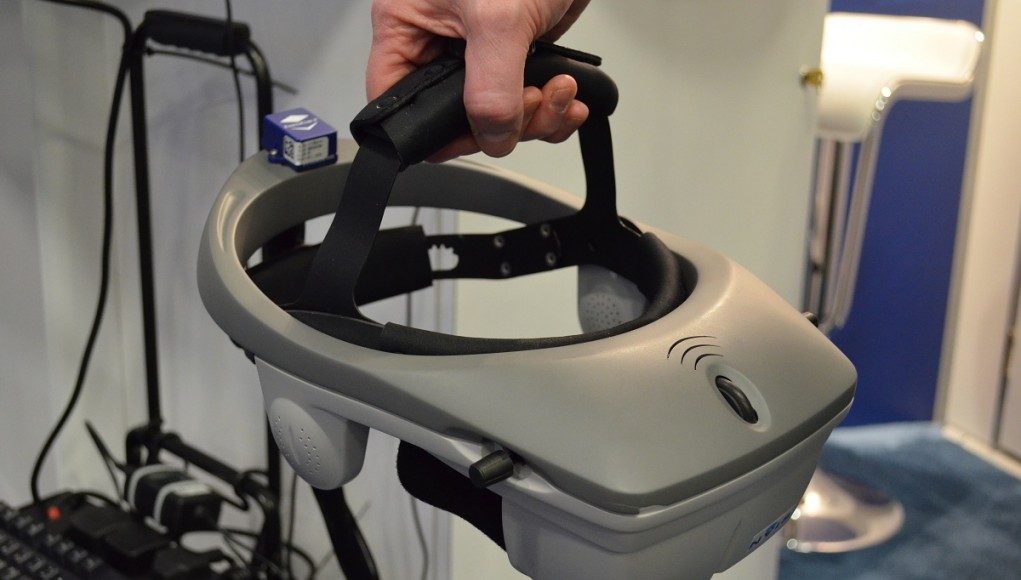At GDC 2013 I spent some time with the folks from Forth Dimension Displays, maker high-end microdisplays. The company’s CEO, Greg Truman, told me in an interview that they were at GDC mainly to evangelize VR. To that end they brought with them the NVIS SX60, a $15,000 head mounted display which uses their microdisplays. Inside was Half Life 2 in full 3D — when I put on the SX60 my first thought was, ‘I can’t wait for the Oculus Rift to have this kind of resolution!’
Had I known how much the SX60 cost before putting it on, I probably wouldn’t have touched it for fear of the ‘break-it, buy-it’ policy. This is a hand-built head mounted display made for research, military, and other high-end uses — not for consumer VR. As they say, ignorance is bliss.
Attached to the NVIS SX60 was an IntertiaCube IMU for head tracking. Inside was a retail copy of Half Life 2 with 3D drivers. When I put on the SX60 I was looking at the plaza scene from early in the game (before you get any weapons). The head tracking was tight and the 3D was great. I strolled around the scene with a controller. The guards in the plaza threatened me with their stun sticks as I approached — it’s bit more menacing in an HMD than on a screen a few feet away.
The 1280×1024 (per eye) resolution was excellent, the scene was very sharp. The moment I put on the SX60 I was thinking that I can’t wait for the Rift to achieve a similar resolution.
Not only was the resolution good, but there was no ghosting at all (blurring during movement) thanks to a very fast switching rate. The display technology in use, Liquid Crystal on Silicon, doesn’t use subpixels, opting rather to stack short pulses of color on top of one another. This means there’s no ‘screen door effect‘, however I did see a bit of color fringing when turning my head — but it’s a more than fair price to pay for the elimination of ghosting.
The 60 degree field of view doesn’t stack up to the Oculus Rift, however it isn’t limited by the display, it comes down to the optics. In the case of GDC, Forth Dimension Displays decided to bring with them an HMD that was quick to put on, like the NVIS SX60. HMDs with a higher field of view tend to be more bulky and have longer set up times not suitable for a demonstration environment.
Stretching out the 1280×1024 resolution over a larger field of view would reduce the clarity of the screen. However, Forth Dimension Displays has a remedy for that — their latest microdisplay has a whopping 2048×1536 resolution. That’s over 3.1 million pixels crammed into a 0.83 inch diagonal, putting the DPI off the charts at 3084.34!
The company told me that, at scale, they believe a VR headset could be sold with their latest display for $1500 — a price point which they think will represent the high-end consumer virtual reality enthusiast market if VR makes it mainstream.









